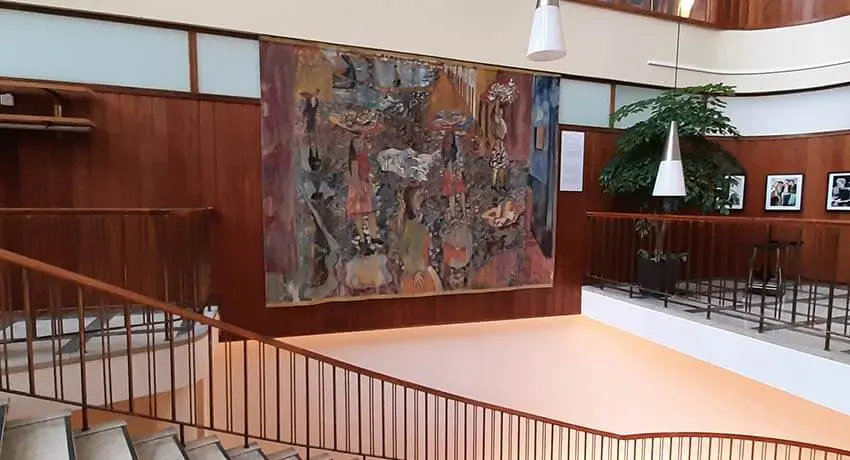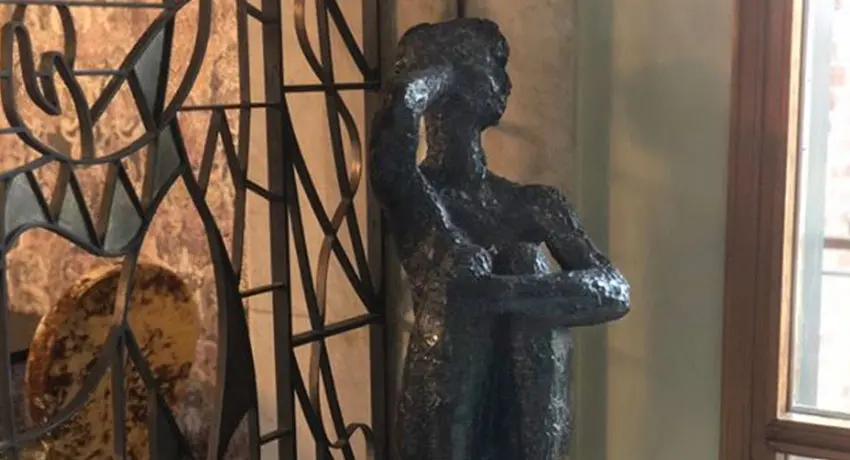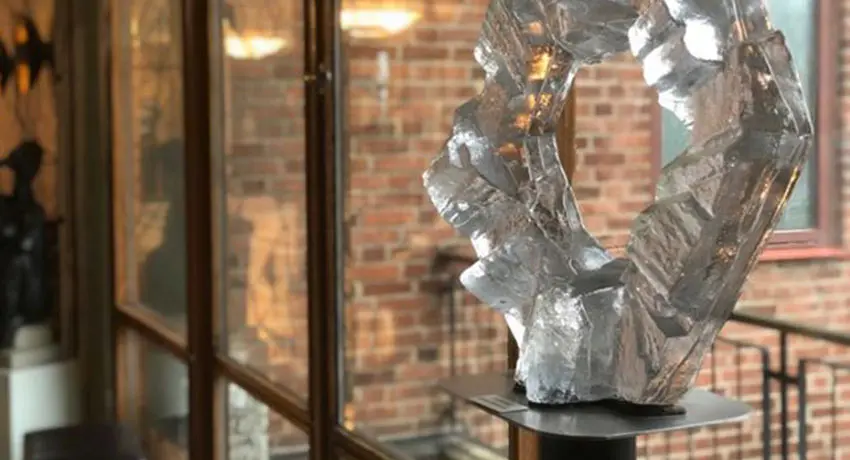Art
The art alone is worth at least one visit. Halmstad Theater is absolutely brimming with artistic ornamentation. You will find it everywhere – on the floors, ceilings and walls.
All kinds of materials are represented; glass, metal, mosaic, paintings and textiles. The Surrealists of the Halmstad Group have left a particularly strong impression. Why not take the opportunity to look around when you come to see a show? You’re very welcome!
When Halmstad Theater was built, art was an intrinsic part of the plan from the very beginning. Fleeting performances aren’t the only source of artistic experiences. They truly permeate the entire theater building – 24 hours a day, all year round. This is art of the highest quality, rooted in the contemporary trends of the early 1950s. Please allow us to proudly present the artists who have made their mark on Halmstad Theater: The Halmstad Group, Edvin Öhrström, Lena Stare, Barbro Nilsson, Sven “X-et” Erixon, Liss Eriksson, Hans Fagerström, Erik Törning, Pierre Olofsson and Karl Axel Pehrson.
Exploring the art on your own
As soon as you pass through the entrance doors of the theater, you can immediately tell that the building is brimming with culture. One might say that it’s in the walls. But you’ll also find art on the ceiling. Take the opportunity to enjoy it all when you visit us for a performing arts event. Here we offer you a short and handy guide to the art.
The foyer
The magic of Stora Salongen
The new red velvet curtain is framed by two murals by Halmstad artists Hans Fagerström and Erik Törning. To the right of the stage you will see Erik Törning’s painting with motifs inspired by outer space in the form of figures related to the constellations. Hans Fagerström’s Cubist painting to the left of the stage harmonises beautifully with the ceiling paintings by Pierre Olofsson and Karl Axel Pehrsson. The magnificent chandelier was designed by the architect Gösta Hedström.
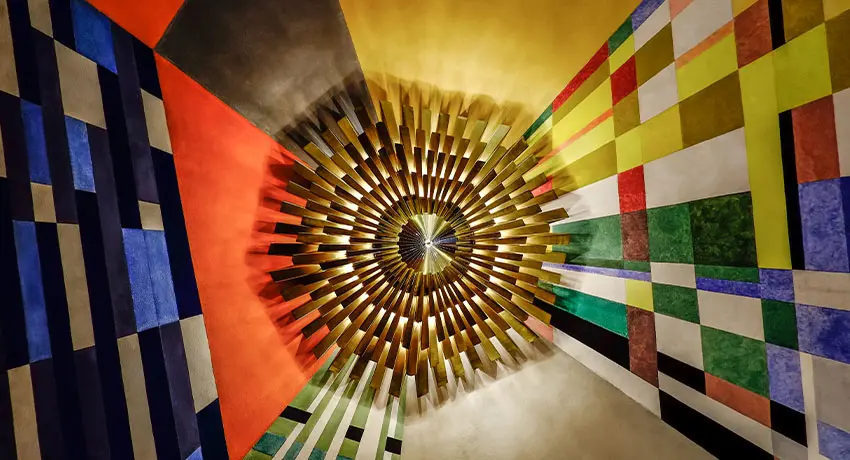
The ceiling paintings by Pierre Olofsson and Karl Axel Pehrsson. The chandelier designed by Gösta Hedström.
Unfortunately, Stellan Mörner’s enormous stage curtain, Konstmedien går [literally translated, “Art Media Goes”] is missing from the venue. It had to be taken down for fire safety reasons and is awaiting a grand new home where it can show off the full splendour of its colours.
Premises named after local artists
In addition to all the above art, the Halmstad Group is represented in the meeting and conference rooms, which are also named after three of the artists – Erik Olson, Axel Olson and Esaias Thorén. Stora salongen also bears the name of Stellan Mörner, and Festsalen in the basement is formally named after Waldemar Lorentzon.
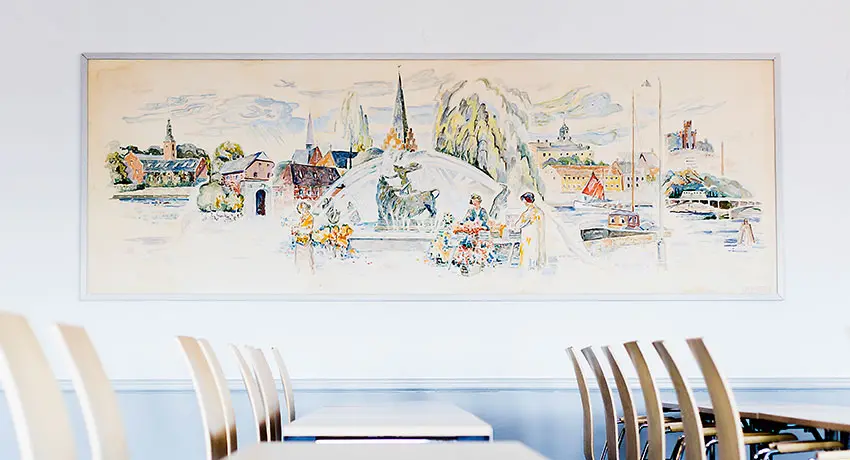
Foto: Anna Reljanovic

